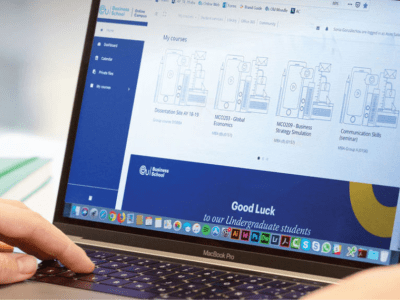The Latest On Leadership Styles
Research on leadership styles in 2024 highlights several key trends and evolving practices shaping effective leadership in today’s volatile business environment.
In 1939, Kurt Lewin proposed that three main leadership styles were evident: autocratic, democratic, and laissez-faire. These styles were sometimes erroneously linked to personality type (who of us was never subjected to a Myers-Briggs personality test?), and subjectively classified as “good” or “bad” (Hint: democratic = good; autocratic = bad; laissez-faire = leadership avoidance).
It took Hersey and Blanchard’s Situational Leadership model (1969) to convince us that no single leadership style is better than another. The most appropriate style of leadership is not only dependent on the task being performed but also on the “task-relevant maturity” of those performing it.
Daniel Goleman’s article in the Harvard Business Review, Leadership That Gets Results (2000), provided a useful summary of the state of play on leadership styles. Has anything changed in the last 25 years? Well, not a great deal. Here’s the latest thinking.
Leadership Style in 2024
- Transformational Leadership: This style continues to be influential, focusing on inspiring and motivating employees to exceed their usual performance. It promotes a culture of continuous learning and improvement. However, potential drawbacks include over-reliance on team members and prioritizing innovation over stability, which can lead to burnout and risky decisions.
- Servant Leadership: Prioritizing the needs and development of team members, servant leadership fosters high levels of trust and engagement. It emphasizes empathy, support, and community, leading to higher employee commitment and long-term success. Nevertheless, this approach can sometimes result in leaders being overwhelmed by their commitment to serving others, potentially leading to burnout and challenges in making tough decisions.
- Democratic Leadership: This style values team input and collaborative decision-making, which can enhance job satisfaction and creativity. However, it can slow decision-making processes and sometimes lead to conflicts due to differing opinions among team members.
- Laissez-Faire Leadership: Providing significant autonomy to team members, this style encourages creativity and ownership. Yet, it can also lead to confusion and a lack of direction if not balanced with adequate guidance and accountability.
- Purpose-Driven Leadership: Leaders who align their organizations with a clear sense of purpose beyond profit, such as sustainability and social responsibility, resonate more with employees and consumers. This approach helps create a motivated and engaged workforce.
- Leadership Ambidexterity: Leaders now face the dual challenge of optimizing current operations while driving innovation for future growth. This concept, known as “leadership ambidexterity,” requires a balance between exploiting existing capabilities and exploring new opportunities. However, only a small percentage of leaders naturally possess this dual capability, prompting organizations to invest in developing these skills across their leadership teams.
- Mental Health Focus: An increasing focus on mental health is emerging as a critical aspect of leadership. Effective leaders are now expected to manage their mental well-being and that of their teams. This involves fostering environments where mental health is openly discussed and supported, reducing stigma, and promoting a balanced, mindful approach to work and technology use.
Impact of COVID on Leadership
What DID happen in recent years was COVID.
The pandemic has had profound effects on leadership styles and practices, leading to several significant changes:
- Empathy and Employee Well-being: Coupled with the mental health focus mentioned above, there has been a marked shift towards empathetic leadership, with leaders placing greater emphasis on the overall well-being of their employees. This has involved implementing flexible work schedules, and mental health support programs, and fostering open communication about well-being concerns, underscoring the importance of understanding and addressing the personal challenges faced by employees.
- Remote and Hybrid Work Management: The widespread adoption of remote work during the pandemic has continued, necessitating leaders to adapt their management styles. Effective leadership in a remote or hybrid work environment involves maintaining clear and consistent communication, ensuring accountability, and building a strong virtual team culture. Leaders need to utilize digital tools effectively and promote a sense of community among geographically dispersed team members.
- Flexibility and Agility: Leaders are now more adept at making quick decisions and adapting strategies in response to rapidly changing circumstances – sometimes called “agile tenacity”. This includes embracing flexible work arrangements and continuously learning and evolving their leadership practices.
- Digital Transformation: The acceleration of digital transformation during the pandemic has meant that leaders are now required to be more tech-savvy, understanding, and leveraging digital tools and platforms to enhance productivity and communication. This includes facilitating virtual collaboration, using data analytics for decision-making, and fostering a culture of innovation through technology.
- Resilience and Crisis Management: The pandemic has reinforced the importance of resilience and effective crisis management. This includes developing contingency plans, fostering a culture of resilience within their teams, and focussing on long-term goals despite short-term disruptions.
- Purpose-Driven Leadership: Leaders are expected to align their actions with a clear sense of mission and values. This approach helps in motivating employees, fostering loyalty, and building a strong organizational identity. These leaders are more focused on creating meaningful work environments that prioritize social responsibility and sustainability.
Final Thoughts
Overall, the post-COVID landscape has led to a more human-centric, flexible, and technologically integrated approach to leadership. These changes reflect the evolving needs and expectations of today’s workforce, aiming to create more resilient and adaptive organizations.
Are you interested in sharpening your leadership skills? Take a look at EU Business Schools’ range of innovative Masters and MBA programs here.










